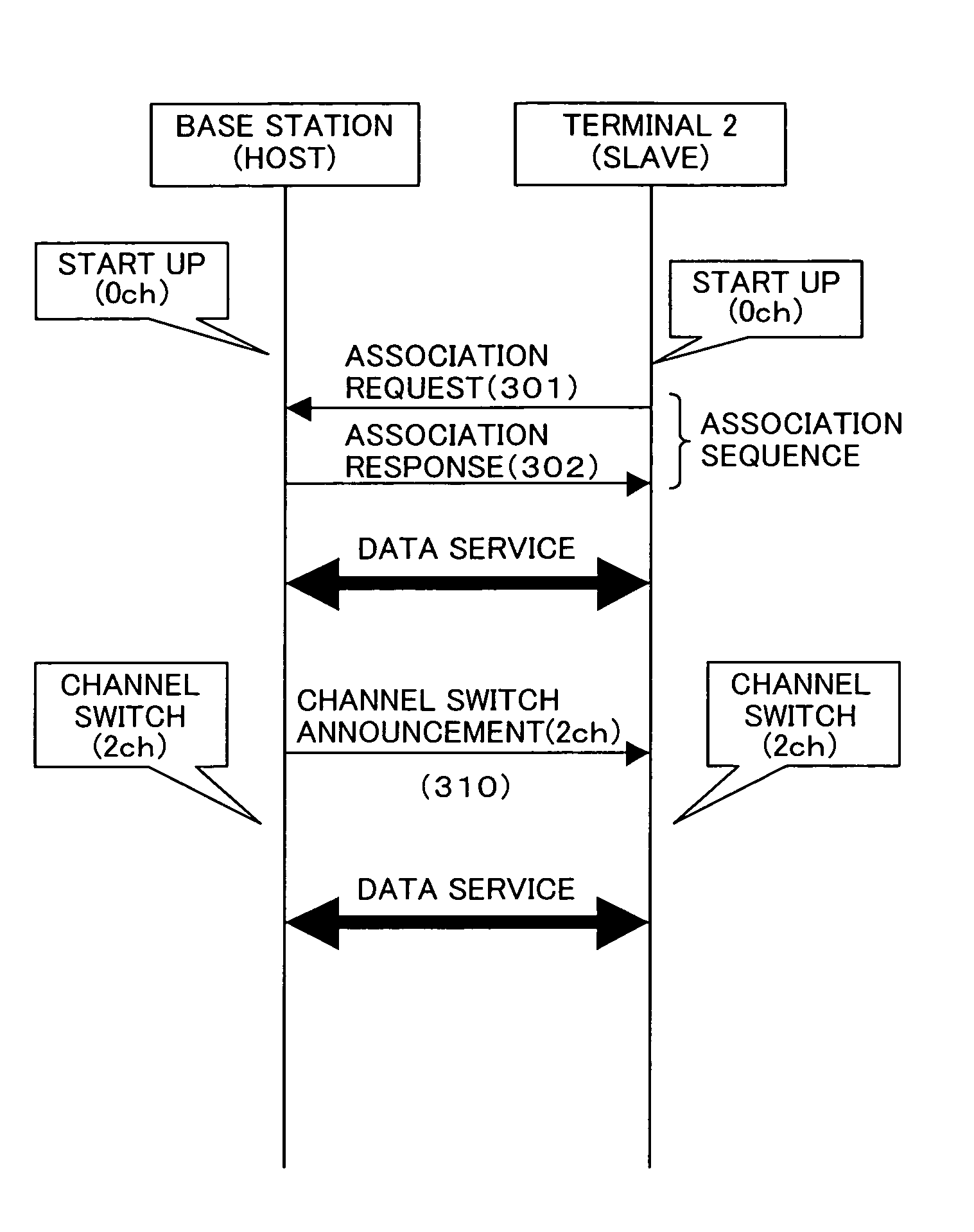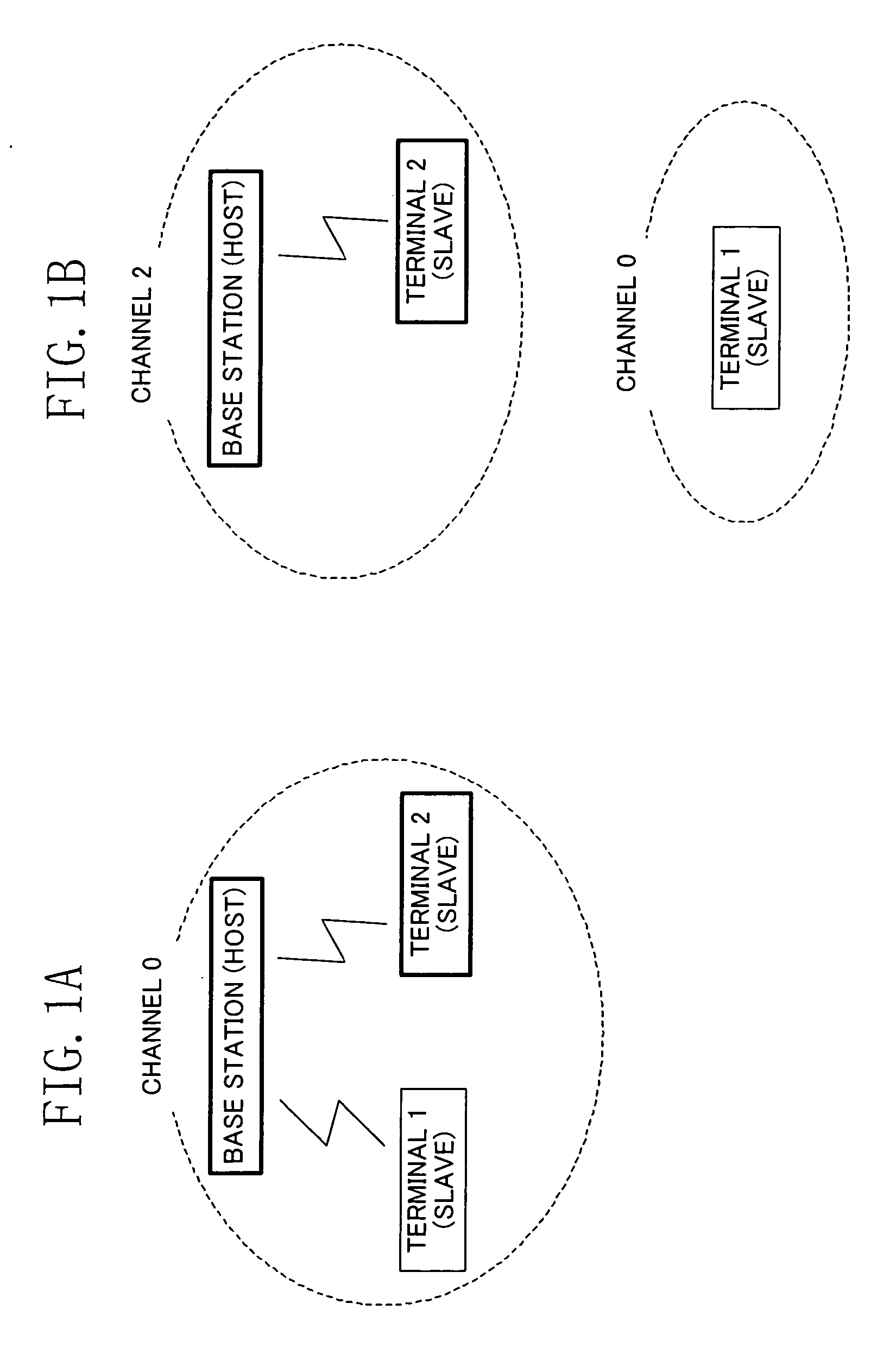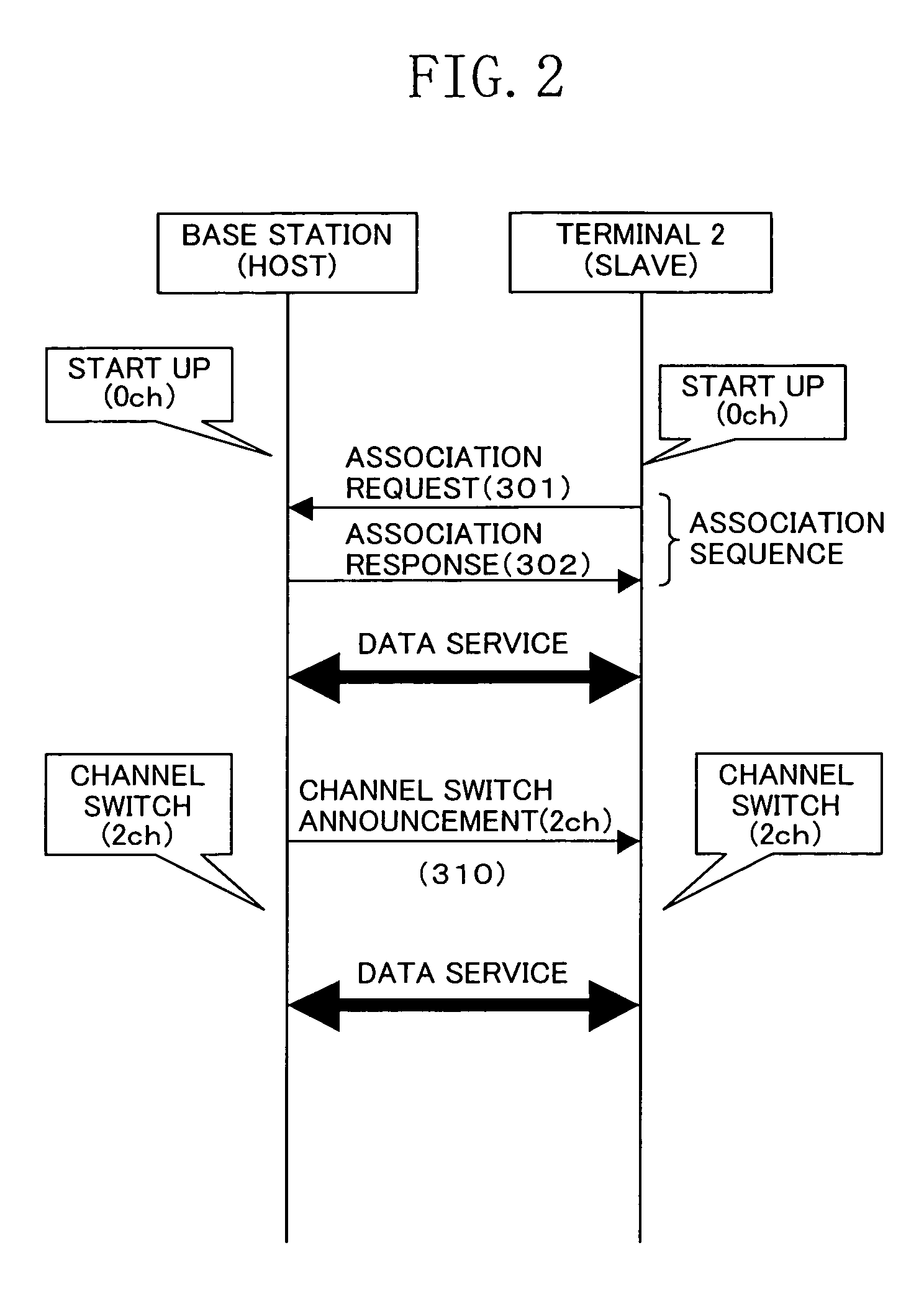Wireless Device
a wireless device and wireless technology, applied in the field of wireless devices, can solve the problems of inability of the terminal to follow the dynamic frequency switching of the base station, data communication fails in some cases, and the inability to establish communication with the base station, so as to reduce the process burden on the host device, shorten the delay time from notification of reception, and efficiently set the time interval for probe request transmission.
- Summary
- Abstract
- Description
- Claims
- Application Information
AI Technical Summary
Benefits of technology
Problems solved by technology
Method used
Image
Examples
embodiment 1
[0052]FIG. 1A shows a wireless network formed by a base station and two terminals, i.e., three devices in total, through Channel—0. In embodiment 1, the base station and the terminal 2 are compliant with IEEE802.11h standard, i.e., have a dynamic frequency switching function, which is an extended standard of IEEE802.11. The terminal 1 is compliant with IEEE802.11 standard but not compliant with IEEE802.11h standard. Hereinafter, a terminal which is not compliant with IEEE802.11h is simply referred to as “incompliant terminal”.
[0053]FIG. 5A shows association and operation confirmation sequences between the IEEE802.11h-compliant base station and the incompliant terminal 1 shown in FIG. 1.
[0054] In the example of FIG. 5A, both the base station and the terminal 1 exist in Channel—0 in the start-up period. In this chart, the time flows downward. After the start up, the terminal 1 transmits an association request signal 401 to the base station, and the base station transmits an associat...
embodiment 2
[0062]FIG. 8A shows a communication sequence without quality of service (QOS) between the base station and the terminal 1 incompliant with IEEE802.11h according to embodiment 2 of the present invention. In the example of FIG. 8A, in the first place, an association sequence which is the same as that described in embodiment 1 is carried out. Specifically, the incompliant terminal 1 transmits an association request 701 to the base station and receives an association response 702 from the base station in return, whereby a wireless link is established between these devices. In the incompliant terminal 1, new link information about the link with the base station is created in link information 700 which is managed inside the incompliant terminal 1.
[0063] After the establishment of the link by reception of the association response 702, the incompliant terminal 1 activates a probe request start timer (probe confirmation timer) 720 with which the confirmation interval for confirming the pres...
embodiment 3
[0068]FIG. 9A shows a communication sequence with quality of service (QOS) between the base station and the terminal 1 incompliant with IEEE802.11h according to embodiment 3 of the present invention. In the example of FIG. 9A, in the first place, an association sequence which is the same as that described in embodiment 1 is carried out. Specifically, the incompliant terminal 1 transmits an association request 801 to the base station and receives an association response 802 from the base station in return, whereby a wireless link is established between these devices. In the meantime, link information 800 about a link with the base station is created in a link information management section of the incompliant terminal 1.
[0069] Then, the incompliant terminal 1 transmits an add_TS request (Action) 803 to the base station and receives an add_TS response 804 from the base station in return, whereby a QOS link is established between these devices. In the meantime, link information that a ...
PUM
 Login to View More
Login to View More Abstract
Description
Claims
Application Information
 Login to View More
Login to View More - R&D
- Intellectual Property
- Life Sciences
- Materials
- Tech Scout
- Unparalleled Data Quality
- Higher Quality Content
- 60% Fewer Hallucinations
Browse by: Latest US Patents, China's latest patents, Technical Efficacy Thesaurus, Application Domain, Technology Topic, Popular Technical Reports.
© 2025 PatSnap. All rights reserved.Legal|Privacy policy|Modern Slavery Act Transparency Statement|Sitemap|About US| Contact US: help@patsnap.com



